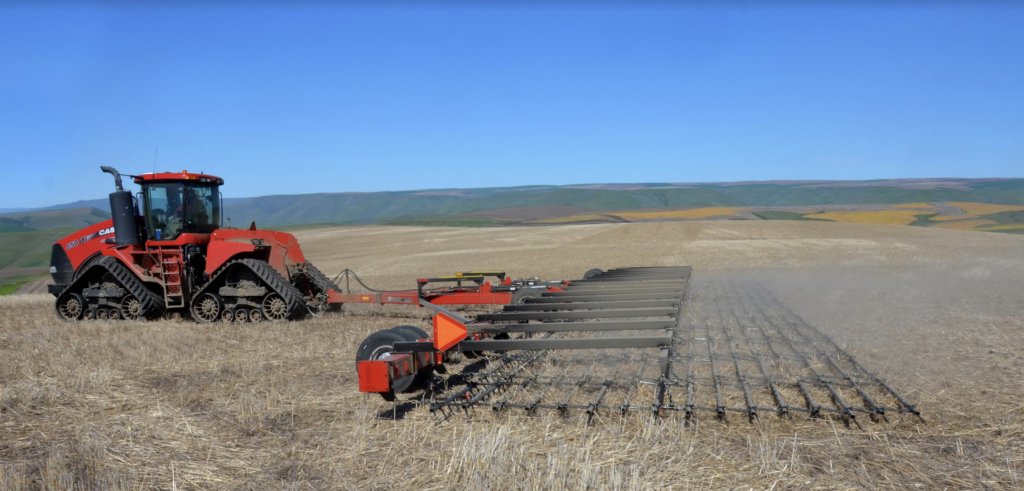Harrow Cart Uses and Conditions

What is the Hillco Harrow Cart?
The Hillco Harrow Cart has been engineered and built with a durable design offering 16 bars of flexible harrow. It has heavy duty wing tubing, robust wing pivot pins for extended wear, high carbon replaceable spikes, and in-board dual wing wheels that prevent wheel and tire damage, among many other features.
What can the Harrow Cart be used for?
Our Harrow Cart has multiple uses for different conditions, including leveling fields, incorporating chemicals, and evenly sizing and spreading residue.
Harrow Cart Uses and Conditions
The Hillco Harrow Cart has been engineered and built with a durable design offering 16 bars of flexible harrow. It has heavy duty wing tubing, robust wing pivot pins for extended wear, high carbon replaceable spikes, and in-board dual wing wheels that prevent wheel and tire damage, among many other features.
The durability of the Hillco Harrow is something that we take pride in, but it isn’t the only thing that makes this harrow top of the line. Our Harrow Cart has multiple uses for different conditions, including leveling fields, incorporating chemicals, and evenly sizing and spreading residue. Today, we will go a little more in depth about this to ensure that growers are fully aware of the capabilities of the Hillco Harrow cart and how to utilize it to its fullest potential.
Field Leveling:
There are a few different ways that growers can use their Hillco Harrow Cart for field leveling. The most common way is to pull the harrow over chiseled or tilled ground to create a smooth and even finish. However, another way to utilize the Hillco Harrow Cart for leveling is to pull the harrow over the top of the soil after a crop is planted. This ensures that the field is level for growers who use flex headers to cut their crop as close to the ground as possible.
CHEMICAL/FERTILIZER INCORPORATION:
The Hillco Harrow Carts were designed to be able to handle additional weight on the frame between the tractor and the center tires. The center 4 tires have a gross load rating of 18,000 lbs. so that tanks for chemical, seed, and fertilizer can be placed on the center frame of the cart and the harrow is used to incorporate the product.
RESIDUE MANAGEMENT:
Lastly, The Hillco Harrow Cart can be pulled through standing stubble to help break down the stubble in preparation for the next crop.
For more questions or information on Hillco’s Harrows, feel free to send us an inquiry on our website or contact us at 800-937-2461
For more questions or information on Hillco’s Harrows, feel free to send us an inquiry on our website or contact us at 800-937-2461

Facebook
Twitter
LinkedIn

